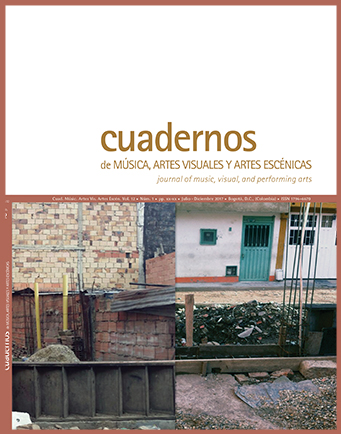Abstract
Partiendo de una concepción de la existencia humana como el proyecto de llegar a ser lo que se quiere ser, este artículo explora la relación de protección-expresión que vincula a los constructoreshabitantes con sus hogares. Esta condición de proyecto se origina en la noción lacaniana de estadio del espejo, movimiento inicial de expansión que va de la fuerza íntima del yo a la imagen del cuerpo y luego a la apertura en el mundo. Ya que nacen expresando la existencia, las casas autoconstruidas por etapas, tan presentes en las ciudades de América Latina, sobre todo en los sectores marginales de las ciudades, mantienen su carácter de proyecto y por eso mismo de índices del momento de la existencia de sus habitantes. Asimismo, como ejercicio profesional de la creatividad y de la sensibilidad, la práctica artística es asumida como laboratorio de experimentación de tácticas productivas y a la vez como herramientade visibilización de las fuerzas vitales depositadas en la vivienda autoconstruida y comúnmente pasadas por alto por los estudios institucionales que tienen injerencia sobre sus derechos.
This journal is registered under a Creative Commons Attribution 4.0 International Public License. Thus, this work may be reproduced, distributed, and publicly shared in digital format, as long as the names of the authors and Pontificia Universidad Javeriana are acknowledged. Others are allowed to quote, adapt, transform, auto-archive, republish, and create based on this material, for any purpose, provided the authorship is duly acknowledged, a link to the original work is provided, and it is specified if changes have been made. Pontificia Universidad Javeriana does not hold the rights of published works and the authors are solely responsible for the contents of their works; they keep the moral, intellectual, privacy, and publicity rights.
Approving the intervention of the work (review, copy-editing, translation, layout) and the following outreach, are granted through an use license and not through an assignment of rights. This means the journal and Pontificia Universidad Javeriana cannot be held responsible for any ethical malpractice by the authors. As a consequence of the protection granted by the use license, the journal is able to publish retractions or to correct information already published. Publishing contents in this journal does not generate royalties for contributors.


